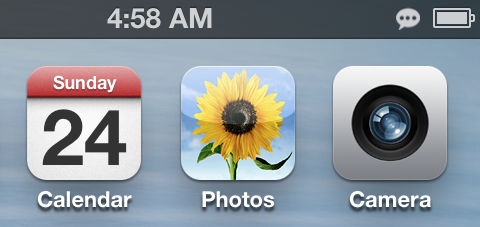

This issue was addressed through improved warnings.ĬVE-2016-4642 : Jerry Decime coordinated via CERT
#Typestatus ios 9.3.3 password
Impact: An application may unknowingly send a password unencrypted over the networkĭescription: Proxy authentication incorrectly reported HTTP proxies received credentials securely. This issue was addressed through improved response validation.ĬVE-2016-4643 : Xiaofeng Zheng of Blue Lotus Team, Tsinghua University Jerry Decime coordinated via CERT This issue was addressed by storing the authentication types with the credentials.ĬVE-2016-4644 : Jerry Decime coordinated via CERTĭescription: A validation issue existed in the parsing of 407 responses. Impact: An attacker in a privileged network position may be able to leak sensitive user informationĭescription: A downgrade issue existed with HTTP authentication credentials saved in Keychain.

Impact: A maliciously crafted calendar invite may cause a device to unexpectedly restartĭescription: A null pointer dereference was addressed through improved memory handling.ĬVE-2016-4605 : Henry Feldman MD at Beth Israel Deaconess Medical Center I do highly recommend this volume for those interested in learning about how satellite remote sensing data and techniques can be applied to archaeological problems.Available for: iPhone 4s and later, iPod touch (5th generation) and later, iPad 2 and later … there are not many books like this in archaeology, as I found the details covered on the analytical methods valuable, particularly for students. “I found this book very practical and it has significant advantages over other archaeological remote sensing books in that it provides methodological details … that I think many students of archaeological remote sensing would appreciate. ” (Simon Crutchley, International Journal of Remote Sensing, Vol. … Overall, it is a useful volume … of more value to those interested in the technical aspects of processing and using the data …. The case studies are generally interesting with examples of the combination of techniques together with various issues caused by data availability, sensor variability, etc. “This book is divided into three sections and has a mix of chapters split between methodology and case studies …. Farr, IEEE Geoscience and Remote Sensing Newsletter, Issue 164, September, 2012) … provides a blueprint for future archaeologists seeking to make the most of remote sensing.” (Tom G.

The illustrations, important for a book on remote sensing, are of high quality and many are in color. … The book is well written and organized. The book begins with an excellent introduction to remote sensing techniques suitable for undergraduate or graduate instruction. “It provides both a good basis for analysis as well as several test cases illustrating the use of remote sensing techniques for archaeology. The authors are renowned experts from the international scientific community.Īudience: This book will be of interest to scientists in remote sensing applied to archeology, geoarcheology, paleo-environment, paleo-climate and cultural heritage. The book offers: (i) an excellent collection of outstanding articles focusing on satellite data processing, analysis and interpretation for archaeological applications, (ii) impressive case studies, (iii) striking examples of the high potential of the integration of multi-temporal, multi-scale, multi-sensors techniques.Įach chapter is composed as an authoritative contribution to help the reader grasp the value of its content. The book provides a first-class understanding of this revolutionary scenario which was unthinkable several years ago. The book focuses on new challenging prospects for the use of EO in archaeology not only for probing the subsurface to unveil sites and artifacts, but also for the management and valorization as well as for the monitoring and preservation of cultural resources. The recent increasing development of EO techniques and the tremendous advances in Information and Communication Technologies (ICT) have resulted primarily in Cultural Heritage applications. This book provides a state-of-the-art overview of satellite archaeology and it is an invaluable volume for archaeologists, scientists, and managers interested in using satellite Earth Observation (EO) to improve the traditional approach for archaeological investigation, protection and management of Cultural Heritage.


 0 kommentar(er)
0 kommentar(er)
